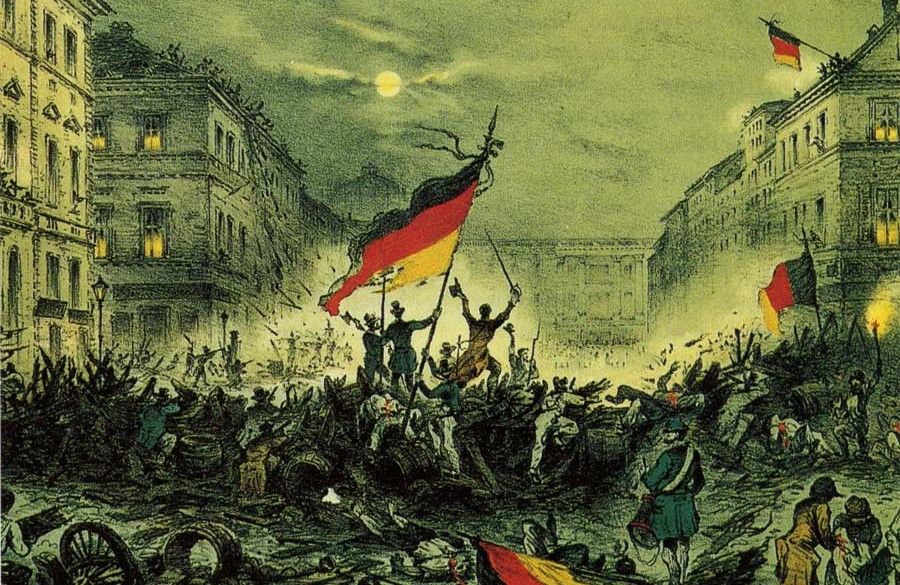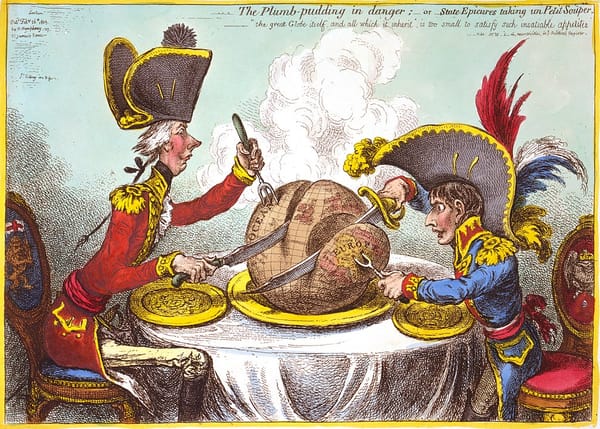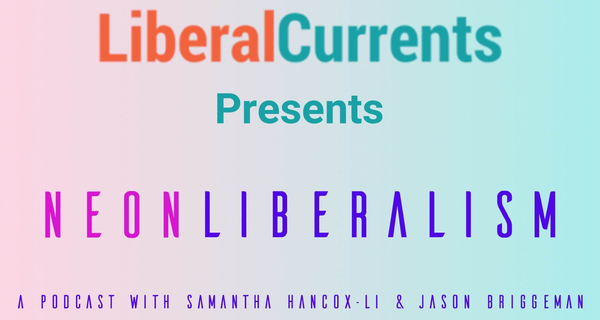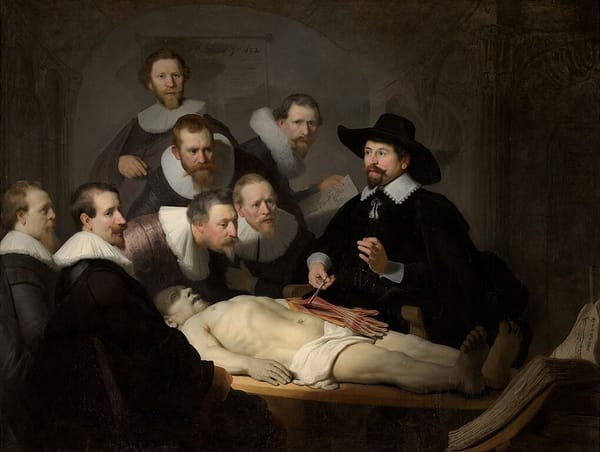At the Socialist-Liberal Nexus

“In place of the old bourgeois society, with its classes and class antagonisms, we shall have an association, in which the free development of each is the condition for the free development of all.” – Karl Marx and Friedrich Engels, the Communist Manifesto
Liberals everywhere should cheer the opening essay in Teen Vogue’s “Bread and Roses” series on the burgeoning interest in socialism. Indeed, liberals might regard Samuel Arnold’s piece as largely a capitulation of socialists to core demands of liberalism. This iteration of socialism is but the latest in a liberal-socialist revisionist tango in which each tradition is made more intelligible to the other.
Arnold abjures central planning, allowing at least some role for markets and profits. He cites the “economic and moral failures” of centrally planned economies like that of the USSR to explain the movement of today’s socialists toward “market socialism.” To a liberal capitalist, central planning is the most dangerous element of socialism, far more than worker control of the means of production. The economist Friedrich Hayek first described the “knowledge problem” that confronts central planners. Local knowledge, partial and often tacit, is leveraged by markets because of the distribution of economic actors. Such information is in part transmitted by prices, which float freely and respond to changes in local conditions that may not be well understood or well articulated by any conscious actor. Such distributed information is opaque to a central planning body. The market socialist Theodore Burczak explores the necessity of engaging with Hayek’s knowledge problem in his fascinating work, Socialism after Hayek.
Arnold also allows that “worker control” does not always mean state ownership. The move to socialism does not necessarily imply a wave of nationalizations. Socialism does mean that a firm’s autonomy is contingent on its serving the public interest. This is an important contrast with liberalism, where it is significantly more difficult for the state to justify interference in a firm, though antitrust policies offer one avenue within liberal practice to counteract accretion of corporate power.
Arnold is remarkably open about various ways socialism might be achieved in ways that may not include domination of the economy by worker cooperatives. Codetermination policies that mandate some minimum number of worker representatives on corporate boards may suffice, as practiced in Germany. As in Norway, the state may just own a significant portion of public stock. Arnold even suggests that a “universal basic income … which increases everyone’s ‘real freedom’ to pursue what really matters to them” can meaningfully advance socialism. On this view, perhaps, the socialist demands for worker control of production can be short-circuited by directly addressing exploitation and alienation of wage labor. Exploitation is alleviated by the presence of meaningful alternatives to working for Capital, and alienation is resolved by each individual being genuinely able to pursue what matters to them. These ideas were echoed in the contribution by Sarah Jaffe, who pointed to the burgeoning popularity of “socialist policies” like UBI and nationalized healthcare in response to the COVID-19 pandemic.
The openness to interpretation about what it means to achieve socialism in practice is an acknowledgment of pluralism and music to a political liberal’s ears. Recognizing other points of view within the socialist camp opens the door to bargaining and coalition building with reform-minded liberals who advocate for similar policies. Liberals have no beef with democratic socialists, as opposed to revolutionary socialists. Or, liberals have merely partisan beefs with democratic socialists.
There is plenty remaining for liberals to dispute in Arnold’s democratic socialism. The idea that major economic decisions should be made collectively—as in the decision of where to locate a second Amazon headquarters—ignores the very problem of concentrated power that socialists would dismantle. Amazon initiated a contest among local governments as to which jurisdiction would provide Amazon with the best advantages, especially in terms of taxes. The core problem is that a global corporate behemoth is able to throw its weight around to secure still greater advantages for itself at the expense of fairness. But this is well captured by diagnoses and solutions within the liberal tradition, such as general proscriptions against these sorts of contests or antitrust action. This is not to say that liberals have always availed themselves to these ideas.
The problem is not that the decision of where to place the headquarters was made to suit Amazon shareholders’ interests as opposed to the collective interest of society. If we decided “together where 50,000 new jobs should be created, or $5 billion in capital should be invested” then, in the best case, these decisions would focus on creating jobs in the neediest regions rather than satisfying consumer desires and innovating to anticipate the wants and needs of consumers to come. At worst, the collective body in charge of making these decisions would be yet another manifestation of concentrated economic power, subject to the same banal self-interest and corruption that enables the presiding capitalist elite to rig economic rules in their favor. If some more direct public control is envisioned, then the risk is the discordant mismanagement of economic policy by popular referendum.
Revisionism from the beginning
It’s fair to ask whether the variations of socialism described in Teen Vogue even count as socialist. Appeals to dictionary definitions (“worker ownership of the means of production”) abound in Internet discussions of socialism at all times, but they were more vivid during the recent Democratic primary contest in which the self-described democratic socialist Senator Bernie Sanders fought for control of the left lane against Senator Elizabeth “capitalist to her bones” Warren. The socialist and the capitalist proffered remarkably similar platforms for being exponents of bitterly opposed ideologies. Is Sanders really a socialist or just a progressive capitalist? Is Warren really a socialist, despite her protests to the contrary? Are one or both of these eminent leaders of the American progressive movement simply confused about their own ideologies? The answer is no. They are both right. And it’s helpful to look to the history of socialist revisionism—what would evolve into modern social democracy—to see this.
The flexible socialism expressed by the modern Democratic Socialists of America (DSA), aiming not to destroy the capitalist order by revolution, but to improve its humanity, has been around for at least a century. Socialist revisionists like Eduard Bernstein and Carlo Roselli saw socialism as continuous with liberalism, paving the way for the social democratic parties of the 20th century. Bernstein was a German socialist, a personal friend of Friedrich Engels, and steeped in the Marxist tradition. No one could claim Bernstein just didn’t properly understand Marxism. And yet he grew frustrated with the dogmatism of the Marxist political party (the SPD) that insisted no cooperation was possible with bourgeois electoral politics and that no such cooperation was needed anyway, as material conditions would usher forth a spontaneous revolution of the proletariat, according to the scientific predictions of Marxist historical materialism. Inevitably. Any day now.
Bernstein disputed the Marxist prediction of the ever-worsening immiseration of the working class. The following is from political scientist Sheri Berman, who describes the emergence of social democratic parties out of the revisionist movements in her book, the Primacy of Politics.
“Proof for actual immiseration has never been and will never be offered,” he noted. Instead, of the past years, the “wealth of society has increased enormously, and its wide distribution makes it possible to fight the danger of stagnation more effectively. Vast market expansion has created previously unimagined possibilities for balancing conflicting forces.” As a result, “the revisionist claim that the way to socialism leads via the ascent, and not the immiseration of the proletariat, has been achieving greater recognition all around.”
Berman 39, quoting Bernstein’s Preconditions of Socialism
The ascent of the workers, whom Bernstein saw becoming property owners in increasing numbers, does not come at the expense of the bourgeois classes, except in relative terms. This is consistent with Marx’s own appreciation of the awesome productive powers of capitalism and the pro-growth ideology of market socialists.
Socialism, for Bernstein, was not some utopia that would obtain once the workers overthrew the capitalists. Socialism is instead realized incrementally, as the intolerable aspects of capitalism are rendered humane by reforms benefiting struggling people in all classes of society.
“With regard to reforms, we ask, not whether they will hasten the catastrophe which could bring us to power, but whether they further the development of the working class, whether they contribute to general progress.” This progress would consist of the “steady expansion of the sphere of social obligations (i.e., the obligations of the individual toward society, his corresponding rights, and the obligations of society toward the individual), the extension of the right of society, as organized in the nation or state, to regulate economic life; the growth of democratic self-government in municipality, district, and province; and the extended responsibilities of these bodies—for me all these things mean development toward socialism, or, if you will, piecemeal realization of socialism.
Berman 41, again quoting Bernstein
All this suggests there simply is no sharp boundary between socialism and liberalism. The Italian revisionist socialist Carlo Rosselli agreed with Bernstein that socialism was the legitimate heir of liberalism, carrying its ideas of universal freedom to practical fruition.
In the name of liberty, and for the purpose of ensuring its effective possession by all men and not just a privileged minority, socialists postulate the end of bourgeois privilege and the effective extension of the liberties of the bourgeoisie to all. In the name of liberty they ask for a more equal distribution of wealth and the automatic guarantee for every person of a life worth living. … They want social life to be guided not by the egoistic criterion of personal utility, but by the social criterion, the criterion of the collective good. … The socialist movement is, in consequence, the objective heir of liberalism: it carries this dynamic idea of liberty forward through the vicissitudes of history towards its actualization. Liberalism and socialism, rather than opposing one another in the manner depicted in outdated polemics, are connected by an inner bond. Liberalism is the ideal force of inspiration, and socialism is the practical force of realization.
Rosselli, Liberal Socialism, quoted in Berman, 108
Democratic socialists like Teen Vogue’s Samuel Arnold and DSA superstar Representative Alexandria Ocasio-Cortez are socialists, but they are socialists that liberal democrats can get along with, and they’re part of a long tradition stretching from the revisionists of a century ago to the market socialists of today.
Contiguity from liberalism
From the other direction, liberalism has always included strains concerned with a robust cultivation of human flourishing for *all* human beings and a skepticism of bourgeois privilege. Adam Smith, the father of modern economics and a protoliberal of pantheon rank, opposed slavery, condemned the brutality of colonialism, and advocated against stark inequalities of wealth (as well as described in detail the various ways tax and regulatory schemes foster such inequality). Smith can sound radical enough at times that a fun time can be had by superimposing his quotations on images of Ocasio-Cortez.
The liberal historian Helena Rosenblatt has recently explored the origins of liberalism by tracing the semantic history of the nouns “liberal” and “liberalism”. On her telling, liberalism emerged with the French Revolution, especially with the Marquis de Lafayette, Benjamin Constant, and Madame de Staël. The original liberal positions were more expansive and inclusive than one might expect from notions of “classical liberalism” (a creature Rosenblatt argues was invented in the 20th century).
By the time the second part of Paine’s pamphlet appeared in 1792, France’s National Assembly had passed additional reforms. A constitution had been approved in 1791. It created a limited monarchy with a unicameral assembly and gave the vote to all adult white males over twenty-five years of age who paid the equivalent of three days’ wages in direct taxes. Although women were not granted the vote, new laws legalized divorce, broadened women’s rights of inheritance, and made it possible for them to obtain financial support for illegitimate children. The Assembly also overhauled the tax system and passed laws to end feudal obstructions to the economy. It abolished guilds and dismantled internal tariffs and trading monopolies. It reduced restrictions on imports. After a major revolt in Saint-Domingue, it abolished slavery in the colonies. Looking back at this early stage of the revolution, Swiss writer Madame de Staël praised the deputies for having given France the “liberal institutions” necessary to ensure civil liberty to all. In so doing, she memorialized and placed her own seal of approval not only on the reforms but also on the new meaning and use of the word “liberal.”
Rosenblatt 47.
This strain of liberalism expressed itself in a diverse set of thinkers in the 19th century. Liberal luminaries like Alexis de Tocqueville and John Stuart Mill had repugnant—and what today we might call illiberal—views on the humanity and developmental prospects of the nonwhite colonial subjects of their respective empires, yet both advocated for extensive state powers and interventions in the economy, including to protect workers and the poor. Mill was also a trailblazer for feminism with the publication of the Subjection of Women. In America Frederick Douglass spoke against slavery, but also advocated powerfully for Black equality during Reconstruction as well as for women’s suffrage.
A Rawlsian interlude
Liberal political philosophy for much of the past half century has revolved around the distributive justice account of John Rawls. For Rawls the basic structure of society must ensure equal freedom for all individuals, and be organized such that whatever inequalities arise benefit the least well off. This liberal framework flatly condemns modern capitalist political economies in which the massive fortunes of the rich coincide with homelessness crises and other social maladies. And while Rawls preferred what he called “property-owning democracy” he also explicitly allowed that democratic socialism met the requirements of justice.
Rawlsian distributive justice has been stretched by more recent liberal thinkers to make liberal justice more effectively universal, in order to be truer to liberal principles. This increased critical attention to genuine universalism has resulted in liberal frameworks more consonant with socialist concerns about social and economic equality.
Liberal feminists like Susan Moller Okin have argued that Rawls’s basic structure assumes a male “head of household” point of view, ignoring intrafamily inequality and the resulting pattern of male supremacy in the broader society. To incorporate the considerations of women, Okin argued that Rawls’s principles of justice must apply within the home as well as within the broader society.
Nobel laureate economist Amartya Sen and philosopher Martha Nussbaum have expanded the concept of distributive justice to comprise a value-plural set of capabilities that are understood as embedded in the social contexts in which individuals live. They offer a holistic, outcome-sensitive approach to distributive justice that avoids the pitfalls of purely procedural—or purely hypothetical—approaches to justice. It is worth noting that Sen launched his illustrious intellectual career as a socialist. Nussbaum frequently appeals to Marx when describing the vision of human flourishing that drives the capabilities approach.
Philosopher Charles W Mills has combined the Rawlsian theory of justice with Marxist and Black radical traditions to flesh out a “Black radical liberalism” that makes liberalism fully accountable to these traditions. Mills highlights how historical liberalism has implicitly assumed a hierarchical social order and how the resulting institutions have propagated material inequality. Riffing on Rawls’s “veil of ignorance” thought experiment, in which we imagine what institutions rational persons would dream up if they didn’t know their place in society, Mills considers what policies would be implemented if those rational individuals didn’t know their place in society but did know about racial and other systemic injustices. They would conclude that direct repair of individuals who have been damaged by White supremacist patriarchal policies are necessary for liberal justice.
Toward a liberal socialist rapprochement
Meanwhile in actual politics, liberalism has come to include the progressive movement and the welfare state institutions of Roosevelt’s New Deal and Johnson’s Great Society. Roosevelt insisted his movement was liberal, and succeeded to the point that his Republican opponent abandoned the word “liberal” altogether, to lasting consequence for American political language. The New Deal firmly established the validity of positive rights (freedom from hunger, etc, that require positive actions by the government) within the mainstream of American political liberalism. Universal health care has been at the top of the agenda of liberal politicians since the Truman Administration. The crafting of Medicare and Medicaid assumed that these were stepping stones on the path to universal coverage.
The latest iteration of the liberal Democratic Party’s Presidential primary, where the party revises its platform and priorities, suggests that the more expansive conceptions of liberalism from the likes of Rawls and Nussbaum have found their way into American party politics. Reflecting a growing enthusiasm among reformers, a UBI was advanced as part of candidate Andrew Yang’s “human-centered capitalism.” Universal childcare and free higher education were campaign planks not just of the democratic socialist, but of several liberal candidates. While falling short of endorsing freedom of movement across borders, Julián Castro advocated decriminalizing unauthorized border crossing, leaving it as a civil offense. Warren made herself publicly accountable to oft-neglected groups like Black women and nonbinary persons, the disabled community, and sex workers in order to learn what policies these groups needed to achieve equity in economic and democratic power. This campaign method resonates with Sarah Leonard’s attractive depiction of socialist feminism. This brief, non-exhaustive survey of the recent Democratic primary illustrates the ongoing ability of liberalism to reform itself to come ever closer to the epigraph above from the Communist Manifesto.
Self-identified neoliberals, libertarians, and more radical liberals can find common cause with young DSA socialists on a number of issues. Especially among libertarians, there is a strong opposition to military entanglements abroad, mass incarceration, mass surveillance, and the prohibition of sex work. Neoliberals have a special passion for freedom of movement across borders and housing rights, though neoliberals tend to focus more on reforming regulations that stifle the housing supply than tools like rent control favored by socialists. Progressive liberals like those who supported Warren and Castro emphasize the importance of democratic reform to extend and protect democratic rights for the disenfranchised. In addition to affirming many of the positions above, they would also close the racial wealth gaps, including by reparations for those impacted by racist policies.
Liberalism contains multitudes, and obviously many varieties of liberalism are inconsistent with even the hip, market-friendly socialism described in the pages of Teen Vogue. Socialism is in turn far more varied than lazy dictionary pushers and red-baiting liberal oldsters give it credit for. There is some truth to the idea that liberalism is a bourgeois ideology, beholden to bourgeois freedoms and bourgeois institutions. Some liberals jealously guard those privileges and exclude, implicitly or explicitly, working classes, people of color, women, disabled persons, and other marginalized groups. But others take the core liberal pillar of universalism as a directive to extend those privileges to all persons. There is a fertile, harmonious nexus where these liberals can meet with those socialists who aspire not to tear down the institutions of bourgeois freedom but to throw open their gates to the workers of the world, the oppressed, and the unfree. At the mixing site of liberal and socialist traditions lies the promise of the free development of each and all.
Featured image is an iconic image of the March 1848 revolution in Berlin, Unknown Author, public domain.




